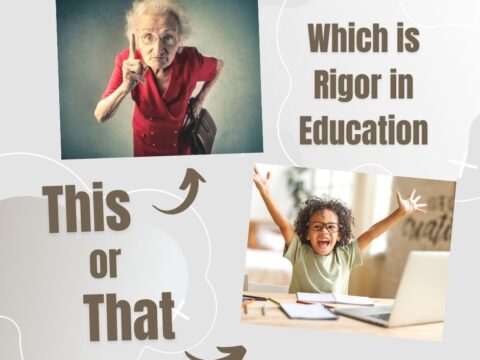I published this several years ago, but with the current dissatisfaction of many parents with traditional education, it’s worth revisiting.
Purpose Driven Learning (or PDL) is a concept coined by Michael Matera and Adam Moreno to summarize the philosophy that each learner’s inner strengths can be unlocked by focusing with purpose and drive. By following the guidelines for Purpose Driven Learning, teachers avoid the biggest pitfall in many lesson plans — that they are theoretic without meaning in the real world. With PDL, resources are relevant, lessons are personalized, and real-life connections are placed under a bright light. In the end, learning is changed from pedantic to powerful and students learn to reliably connect academic studies to the world outside the schoolhouse.
The Goal of PDL
In a phrase:
…the goal of Purpose Driven Learning is NOT about a curriculum that lasts a year. It’s about creating life-long learners who fuel their future passionately with knowledge.
This applies to both 1) education pursued with the goal of college or career, and 2) the critical preparation of students to succeed in life. Purpose Driven Learning, faithfully delivered with buy-in from students, will result in students willingly participating in even the boring lesson pieces (like worksheets or podcasts) as well as exciting applications like simulations and student-devised projects.
Problems implementing Purpose Driven Learning
Engaging PDL in your classroom is seen by some as teaching students what they want to learn at the expense of what they need to learn but this isn’t true. Done right, students come to understand that real knowledge relies on a solid foundation of data upon which they build their personal interests. For example, students who want to join America’s Space Force must first be grounded in the basics of science and math.
Educators who wish to use PDL often run into three roadblocks:
School Standards. Because state and national standards are often devised to serve the majority of students, they may not well-serve your students. But they do provide a necessary foundation without which the goals of your particular group can’t be met. That means that standards are taught first and additional learning is scaffolded afterward. Standards are in fact the foundation that underpins your students’ ability to achieve their PDL goals.
Get started by digging deeply into school standards, be they state or national, probably not unlike what you do already in your traditional classroom. Understand their goals and tweak them to fit the unique needs of your group. The first year you do this will be challenging. Find connections to the norms and granular information that allows you to dynamically build lessons that meet unique goals.
In-place curriculum. Treat your grade-level or school curricula the same as you might the school standards. Understand what they are and how they achieve the intended learning goals. If you follow Understanding by Design (see my article on UbD), this will quickly make sense. Apply UbD’s concept of Backward Design with PDL as the goal. If you get pushback from administrators or parents, educate them on how PDL is layered on top of current standards and curricula, not in place of.
How can you teach more when you struggle to complete what is already required? This answer may surprise you: When students have a purpose to learning, they absorb it faster, remember it longer, and voluntarily spiral back on it as needed.
Parent buy-in. Change is one of life’s constants but when it happens in the classroom, it’s stressful — even nerve-wracking — for parents. Usually, schools address change by showing how it contributes to, improves, even transforms learning. Parents might see the change required to implement PDL as a “shiny object” (read more about shiny object syndrome in schools) — employing flashy interests at the expense of hard work. Be prepared for this discussion. An example you might use is gamified learning. While many parents in the past equated education games to the frenetic ones their kids play to avoid homework, they now accept that the characteristics of game-playing serve educational purposes better than rote drills and memorization. To achieve this buy-in with PDL, understand its pedagogy and show examples to parents that verify its effectiveness.
Unpacking Purpose Driven Learning
Define “Purpose”. Students must buy into the definition of “purpose” to accept the steps laid out to achieve it. Otherwise, lesson plans and resources become grade-centric rather than learning-focused. This makes sense, don’t you think? If students don’t accept the purpose as relevant to their goals, they won’t take the applications seriously.
At the start of school, discuss class goals and what is required to reach them within the timeframe of a year. Agree on one (or more) that assures students the time they spend in class will not be wasted, will in fact, facilitate their needs.
Encourage enthusiasm. Purpose Driven Learning is not about completing a project but about achieving goals. It’s not about memorizing data but about turning the results into understanding. The data is the evidence but the conclusion is the learning.
Be open-minded in choosing pathways to the achievement of goals. Since everyone agreed on these at the start of the school year, allow students flexibility in how they reach them.
Learning happens anywhere. Learning doesn’t have to occur behind a desk, at a kidney table, or even within the walls of your classroom. It can be in the backyard, a playroom, the local park, or a grocery store. Adjust your mindset to accept that Purpose Driven Learning is about knowledge, not complying with traditional constructs. When a classroom is anywhere, life-long learning flourishes.
Know your students. Take time to get to know your students. Notice what inspires them. Understand their goals. Make teaching relevant to their goals and inspiration.
Educational Applications
- Unschooling — If you follow a homeschool curriculum that encourages pursuing personal interests like unschooling, PDL should be part of that program. This article on Unschooling explains the pedagogy more clearly.
- Gamification of learning — The Internet is filled with a spectrum of educational games that support academic goals. With careful, judicious selection, they add rigor and depth to your teaching. Here’s a list of games and simulations and a lesson plan on how to gamify your class.
- Serve a particular group — All students don’t learn the same way. If you have students you can’t reach with a traditional approach, try PDL. You can even take student input on what learning approach they would like and that fulfills standards and curricula needs.
- Genius Hour — Genius Hour allows students to use 20% of class time in the pursuit of their own interest. This is structured to meet school standards and curricular needs but flexible enough to allow students to follow their own path in achieving these. Here’s an article and a lesson plan on Genius Hour.
***
The historic purpose of education is to help students to thrive as an adult. PDL may be exactly what you need.
More on Purpose Driven Learning
10 Keys to Purpose Driven Learning (podcast)
How to Create the Purpose Driven Lesson Plan
Copyright ©2023 AskaTechTeacher.com – All rights reserved.
–image credit Deposit Photos
Here’s the sign-up link if the image above doesn’t work:
Jacqui Murray has been teaching K-18 technology for 30 years. She is the editor/author of over a hundred tech ed resources including a K-12 technology curriculum, K-8 keyboard curriculum, K-8 Digital Citizenship curriculum. She is an adjunct professor in tech ed, Master Teacher, webmaster for four blogs, an Amazon Vine Voice, CSTA presentation reviewer, freelance journalist on tech ed topics, contributor to NEA Today, and author of the tech thrillers, To Hunt a Sub and Twenty-four Days. You can find her resources at Structured Learning.







































PDL is important.
Thanks, Jack. Agreed.
I have to admit it is the first time I hear about Purpose Driven Learning, but then I am not an educator. It sounds very interesting.
The goal of PDL is my goal also, as an educator. The problem is if students don’t follow a curriculum, they may not get what is necessary to enter the adult world. Then again, they may.